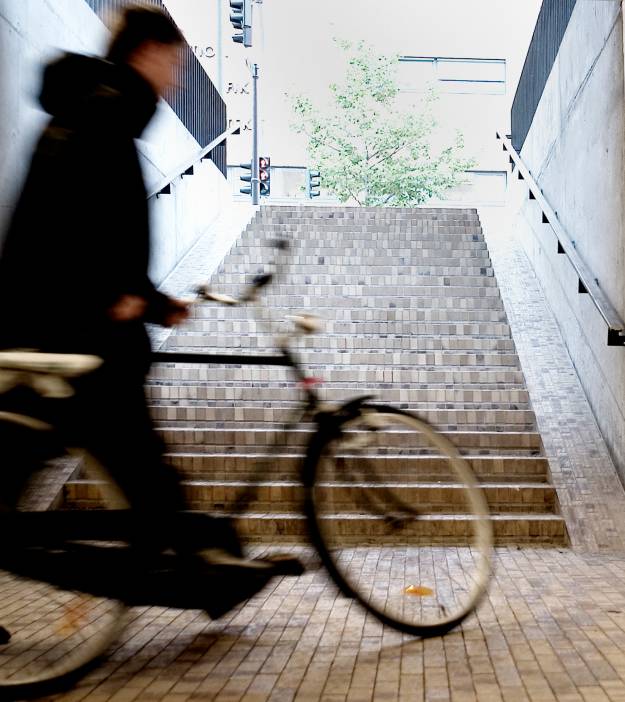Related:
We asked Adrian for his initial thoughts on cycle proofing and the government’s recent ‘Ambition for Cycling’ announcement.
 “Cycle proofing isn’t just about safety, it is about creating routes that are convenient for cycling with an appropriate level of segregation on links and of priority at junctions. Ultimately, this means creating conditions where it usually feels safe to ride in the carriageway on quiet or lower speed limit roads, while busier, high speed roads have continuous routes separated from motor traffic.
“Cycle proofing isn’t just about safety, it is about creating routes that are convenient for cycling with an appropriate level of segregation on links and of priority at junctions. Ultimately, this means creating conditions where it usually feels safe to ride in the carriageway on quiet or lower speed limit roads, while busier, high speed roads have continuous routes separated from motor traffic.
“A well designed route is intuitive, drivers will automatically adjust their speed, all users know when to give way and when they have priority.
“Cycle proofing existing roads will require us to revisit political priorities. There is a tendency to consider the primary function of roads and streets is to move cars, but in residential areas, outside schools and in town centres there are always far more ‘people’ than vehicles and this needs to be reflected in the allocation of space in streets and at junctions. It is people that spend money, create jobs and make interesting, lively public spaces and pleasant places to live and visit, not cars. Cycling is a vital part of making successful and civilized places.
“The announcement of the government’s ‘Ambition for Cycling’, along with its earlier ‘Action for Roads’ document offers a huge opportunity for capital investment in cycle facilities. These new roads perhaps offer the greatest opportunity to create safe inter-urban facilities of segregated cycle tracks and parallel minor roads alongside major road carriageways, as is common practice in the Netherlands.
“It is important that the Highways Agency and local authorities provide cycle routes as an integral part of all these new road schemes. Crucially, major road junctions should incorporate controlled crossings or grade-separated subways and bridges for pedestrians and cyclists that keep them away from turning traffic but still offer continuous and convenient routes.
"Cycle-proofing isn’t just about making separate infrastructure, it is also about making streets where people are the primary consideration and movement and parking of motor traffic is not always the main purpose of a road."
Adrian Lord
“The government’s Cycle Ambition funding presents a challenge to local authorities and National Parks seeking to retro-fit infrastructure in busy areas where highway space is constrained and where some road users feel frustration at local congestion and others are fearful of traffic danger.
“Cycle proofing requires a robust approach to addressing the politics of how we prioritise road users in different situations as well as technical designs that make it safe, easy and convenient to cycle.
“Cycle-proofing isn’t just about making separate infrastructure, it is also about making streets where people are the primary consideration and movement and parking of motor traffic is not always the main purpose of a road. This means lower speed environments where people and traffic can mix more safely. Cycle proofing requires a much more equal approach to priority, recognising that it is often safer for cars to give way to cycle traffic at junctions and side roads- as well as more convenient for the cyclist.
“Designers will need to reconsider the whole highway, the space between buildings, to avoid some of the pitfalls of trying to fit with existing kerbs and lane markings that lead to compromised infrastructure.
“Cycle proofing also requires innovations, such as automated high density cycle parking, cycle traffic signals and greater use of technology such as variable message signs and vehicle detection systems that can warn other road users of the presence of cyclists at hazardous locations.
“There is often considerable variation in the expertise and knowledge of highway planners and engineers. One of the challenges for cycle-proofing is to make professionals aware of the range of design options that they can already deploy, such as the removal of centre lines to accommodate cycle lanes along narrower roads, as well as future innovations.”












